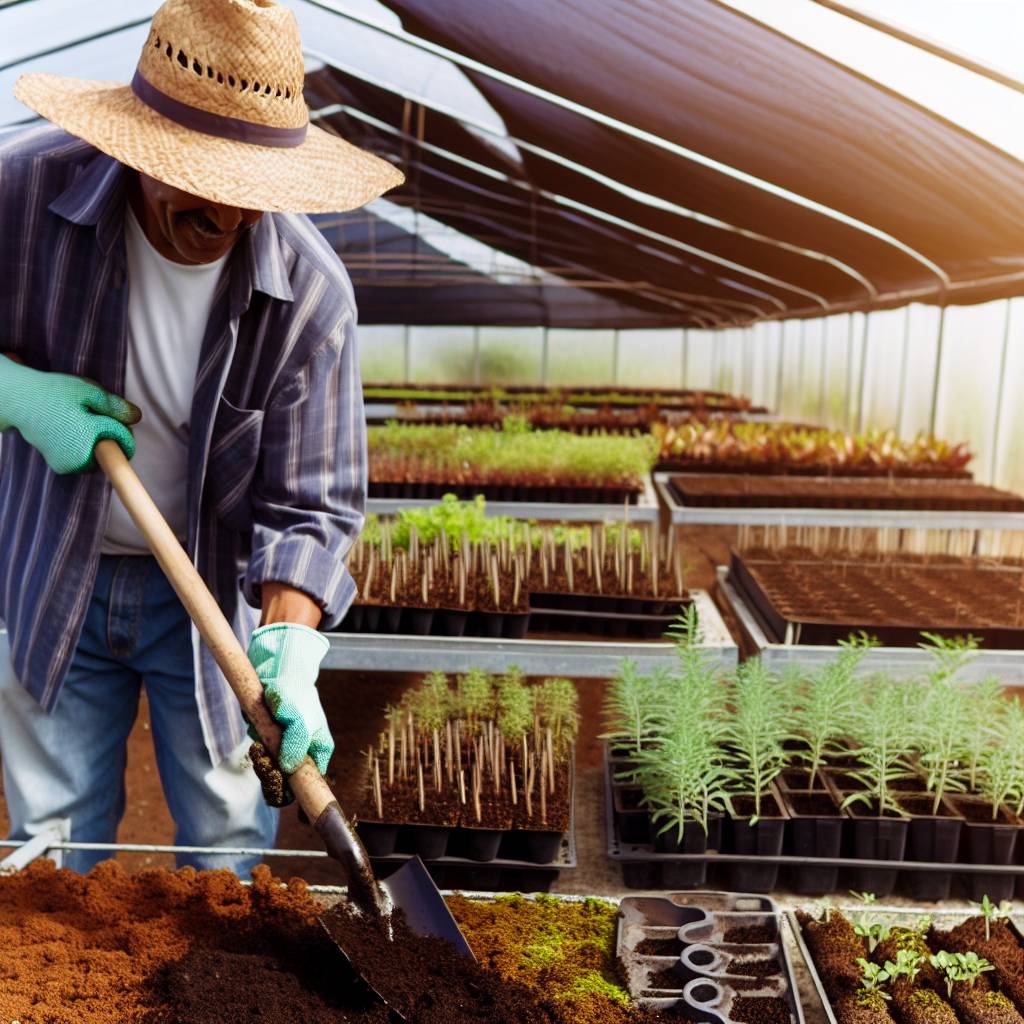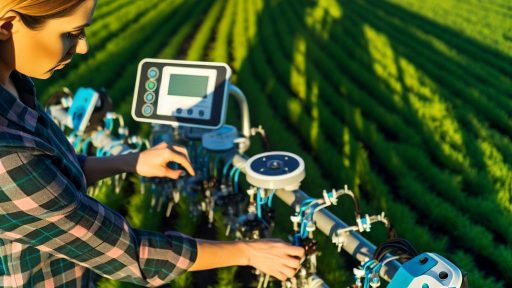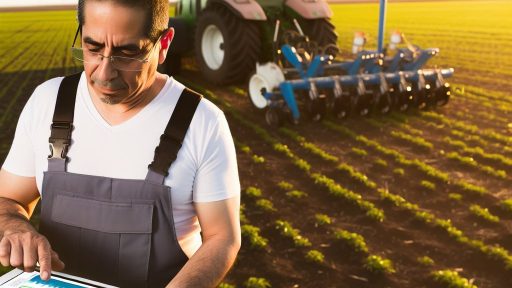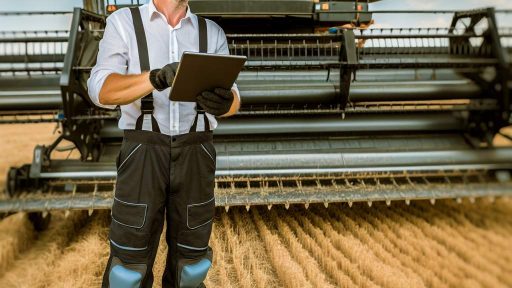Introduction to Greenhouse Development
Benefits for Suburban Property Owners
Greenhouse development offers numerous advantages for suburban property owners.
First, it provides an opportunity for year-round gardening.
This allows you to grow a wide variety of plants regardless of the season.
Additionally, greenhouses can enhance the aesthetics of your property.
Well-maintained greenhouses can become beautiful focal points in your yard.
Moreover, they can increase the overall value of your home.
People often seek homes with unique features like greenhouses.
In addition to beauty, greenhouses promote sustainability.
You can grow your own fruits and vegetables, reducing grocery costs.
This helps you create a more self-sufficient lifestyle.
Furthermore, homegrown produce is often fresher and healthier.
This leads to better nutrition for you and your family.
Greenhouses also offer a controlled environment for plant growth.
You can manage factors like temperature, humidity, and light.
This control allows for more precise cultivation techniques.
Transform Your Agribusiness
Unlock your farm's potential with expert advice tailored to your needs. Get actionable steps that drive real results.
Get StartedAnother important benefit is the educational opportunities they provide.
Gardening can teach valuable lessons about nature and responsibility.
Children can learn where food comes from through hands-on experience.
Finally, greenhouses can foster a sense of community.
Sharing gardening tips or produce with neighbors can build relationships.
In this way, greenhouse development enriches not only your life but also your community.
Types of Greenhouses: Choosing the Right Structure for Your Property
Understanding Your Needs
Evaluate your gardening goals before selecting a greenhouse.
Decide whether you want to grow vegetables, flowers, or tropical plants.
Consider the space available in your suburban property.
Assess your budget for building and maintaining the greenhouse.
Common Greenhouse Structures
There are various types of greenhouses for different needs.
Each structure has its own benefits and drawbacks.
Some popular choices include hoop houses and A-frame greenhouses.
Hoop Houses
Hoop houses are simple and inexpensive to build.
Their rounded shape allows snow to slide off easily.
They work well for seasonal crops and extending the growing season.
A-Frame Greenhouses
A-frame greenhouses provide a sturdy structure that resists strong winds.
Their design maximizes light exposure for plants.
These are ideal for suburban properties with limited space.
Considerations for Climate
Your local climate greatly influences greenhouse choice.
In cooler regions, consider structures with better insulation.
Warmer climates may benefit from ventilated designs to reduce heat buildup.
Materials and Construction
The materials you choose affect durability and maintenance.
Common options include glass, polycarbonate, and plastic sheeting.
Showcase Your Farming Business
Publish your professional farming services profile on our blog for a one-time fee of $200 and reach a dedicated audience of farmers and agribusiness owners.
Publish Your ProfileEach material varies in terms of light transmission and insulation properties.
Glass Greenhouses
Glass greenhouses offer beautiful aesthetics and excellent light transmission.
They generally require a higher initial investment.
Ensure adequate ventilation to manage temperature and humidity.
Polycarbonate Greenhouses
Polycarbonate greenhouses are durable and lightweight.
They provide good insulation and UV protection.
This option balances cost and performance for suburban settings.
Plastic Sheeting Greenhouses
Plastic sheeting is the most affordable choice for building a greenhouse.
It allows for easy installation and customization.
However, it may need replacement every few years.
Future Expansion and Flexibility
Consider future needs when choosing your greenhouse.
Your initial setup should allow adaptability for new plants or techniques.
Design your greenhouse layout to accommodate future growth.
Involving Professionals
If you’re unsure, consult with local greenhouse experts.
They can provide valuable insights tailored to your property.
Professional guidance can help streamline the building process.
Site Selection: Factors to Consider for Optimal Greenhouse Placement
Location and Accessibility
Choose a location that is easily accessible from your home.
This will simplify the process of maintaining your greenhouse.
Consider proximity to water sources for irrigation.
You may also want to ensure access to electricity for heating and lighting.
Sunlight Exposure
Optimal sunlight exposure is crucial for plant growth.
Identify a spot that receives at least six hours of direct sunlight daily.
Avoid shading from trees or buildings that can hinder light access.
Consider the seasonal changes in sunlight when selecting your site.
Soil Quality
Test the soil quality in your chosen location.
Healthy soil promotes robust plant growth.
Avoid areas with heavy clay or highly sandy soils.
Look for options to amend the soil if it lacks nutrients.
Local Climate Considerations
Understand the local climate before placing your greenhouse.
Research temperature ranges and seasonal weather patterns.
Choose materials that can withstand local weather conditions.
In cooler climates, consider adding insulation for winter months.
Space and Size
Determine how much space you can dedicate to a greenhouse.
Consider both the size of the greenhouse and the surrounding layout.
Adequate spacing allows for easy movement and future expansion.
Think about potential pathways for accessibility and ventilation.
Regulatory and Zoning Issues
Familiarize yourself with local zoning regulations.
Some areas have restrictions on greenhouse size and type.
Check if permits are required before constructing your greenhouse.
Consult local authorities or homeowners’ associations if needed.
Showcase Your Farming Business
Publish your professional farming services profile on our blog for a one-time fee of $200 and reach a dedicated audience of farmers and agribusiness owners.
Publish Your ProfileEnvironmental Considerations
Consider the environmental impacts of your greenhouse.
Look into sustainable practices to minimize your carbon footprint.
Assess the impact on local wildlife and vegetation.
Choose eco-friendly materials and energy-efficient systems.
Discover More: Conservation Tillage Research Insights for Agricultural Success
Climate Control: Understanding Temperature, Humidity, and Ventilation Needs
Temperature Management
Temperature plays a crucial role in greenhouse performance.
Maintaining optimal temperatures enhances plant growth and productivity.
Each plant type requires specific temperature ranges.
Use a thermometer to monitor daytime and nighttime temperatures.
Consider investing in heaters or cooling systems for control.
Seasonal changes also affect indoor temperatures.
Implementing shading can reduce heat during warmer months.
Humidity Control
Humidity levels directly affect plant health and growth rates.
Too much humidity can lead to mold and disease.
Conversely, low humidity can cause dehydration.
Regularly check humidity levels with a hygrometer.
Ventilation helps regulate excessive moisture.
Consider using humidifiers if the environment is too dry.
Adjust humidity according to the growth stage of your plants.
Ventilation Strategies
Proper ventilation maintains a healthy greenhouse environment.
Good airflow prevents heat buildup and reduces humidity.
Natural ventilation can be achieved using vents and windows.
Incorporate exhaust fans to enhance airflow, especially in summer.
Timing of ventilation can impact temperature and moisture management.
Regularly inspect and maintain ventilation systems for efficiency.
Consider automated systems for more precise control.
Environmental Monitoring Tools
Using technology can significantly enhance climate control.
Install sensors to monitor temperature and humidity continuously.
Automated alerts can notify you of environmental changes.
Integrating Wi-Fi connected devices allows for remote monitoring.
Data loggers help track climate trends over time.
Investing in the right tools streamlines management efforts.
Best Practices for Optimal Conditions
Regularly calibrate your monitoring devices for accuracy.
Keep records of climate data to understand plant needs.
Rotate crops to avoid stressing the same plants continuously.
Stay informed about seasonal weather patterns affecting your greenhouse.
Collaborate with local agricultural experts for tailored advice.
Prioritize energy efficiency to reduce operational costs.
Applying these strategies leads to better yields and healthier plants.
Discover More: Greenhouse Cultivation for Organic Crop Production in the USA
Showcase Your Farming Business
Publish your professional farming services profile on our blog for a one-time fee of $200 and reach a dedicated audience of farmers and agribusiness owners.
Publish Your ProfileChoosing Plants: Best Crops for Suburban Greenhouses and Seasonal Planning
Considerations for Plant Selection
Choosing the right plants is vital for greenhouse success.
Evaluate your climate before making selections.
Also, consider the size and space available in your greenhouse.
Lastly, think about your personal preferences and dietary needs.
Best Vegetables for Suburban Greenhouses
Several vegetables thrive well in suburban greenhouses.
- Tomatoes flourish with proper light and warmth.
- Peppers require similar conditions and are highly productive.
- Leafy greens, such as spinach and lettuce, grow quickly.
- Herbs like basil and cilantro are also great choices.
Fruits to Consider
Many fruits adapt well to greenhouse conditions.
- Strawberries can yield fruit throughout the summer.
- Blueberries thrive in containers, making them perfect for greenhouses.
- Citrus plants produce fragrant fruit and thrive in warmth.
- Figs can also do well, especially in larger greenhouses.
Seasonal Planning
Planning your planting schedule looks different for each season.
Spring and Summer Crops
Start with cool-season crops in early spring.
Examples include peas, kale, and radishes.
As temperatures rise, transition to warm-season crops like tomatoes and peppers.
Fall and Winter Options
For cooler months, focus on crops that tolerate lower temperatures.
Root vegetables like carrots and turnips do remarkably well.
Also, consider growing microgreens, which thrive in cooler conditions.
Long-term Plant Choices
Think about perennials for long-term efforts.
Herbs like oregano and thyme return year after year.
Fruit trees can be grown in pots for mobility and convenience.
Investing in perennial plants can reduce future planting efforts.
Enhancing Your Greenhouse Experience
Choosing the right plants enhances your greenhouse experience.
Seasonal planning ensures year-round production.
Ultimately, make selections based on your preferences and conditions.
Explore Further: The Business Case For Integrating Data-Driven Farming Into Property Ventures

Irrigation Systems: Efficient Watering Techniques for Suburban Greenhouses
Importance of Effective Irrigation
Efficient irrigation ensures optimal plant growth in suburban greenhouses.
It conserves water while maximizing crop yield.
Moreover, proper watering techniques help prevent diseases and pests.
Types of Irrigation Systems
Various irrigation systems suit suburban greenhouse needs.
Each system offers unique benefits and efficiency levels.
Drip Irrigation
Drip irrigation delivers water directly to plant roots.
It minimizes evaporation and runoff, promoting water efficiency.
Additionally, this method reduces weed growth and disease risk.
Sprinkler Systems
Sprinkler systems provide even water distribution over large areas.
They can cover various plant types and sizes effectively.
However, careful planning is essential to avoid overwatering.
Soaker Hoses
Soaker hoses release water slowly along their length.
They are efficient for moistening beds without wasting water.
Moreover, they help maintain consistent moisture levels in the soil.
Watering Schedules and Techniques
Establishing a watering schedule is crucial for greenhouse success.
Considerations include plant types, weather, and soil moisture levels.
For instance, plants in warmer conditions may require more frequent watering.
Monitoring Soil Moisture
Soil moisture sensors can help determine when to water.
They provide real-time data for accurate irrigation decisions.
Showcase Your Farming Business
Publish your professional farming services profile on our blog for a one-time fee of $200 and reach a dedicated audience of farmers and agribusiness owners.
Publish Your ProfileBy using these sensors, gardeners can avoid overwatering.
Time of Day for Watering
Watering early in the morning reduces evaporation losses.
Evening watering can encourage fungal diseases.
Thus, timing plays a vital role in maintaining plant health.
Water Conservation Techniques
Implementing water-saving methods enhances sustainability.
Rainwater harvesting is an effective approach for sustainability.
Additionally, reusing water from household activities can benefit gardens.
Mulching
Applying mulch helps retain soil moisture.
It also regulates soil temperature and suppresses weeds.
Organic mulches further enrich the soil as they decompose.
Using Native Plants
Choosing drought-tolerant native plants reduces watering needs.
These plants adapt well to local climate conditions.
Additionally, they support local wildlife and biodiversity.
Learn More: The Role of Weed Control in Sustainable Land Development
Sustainability Practices: Incorporating Eco-Friendly Methods in Greenhouse Management
Understanding Eco-Friendly Greenhouses
Eco-friendly greenhouses utilize sustainable practices for effective management.
They blend innovative design with nature-friendly materials.
As a result, these greenhouses reduce environmental impact.
Utilizing Renewable Energy Sources
Renewable energy sources power many eco-friendly greenhouses.
Solar panels offer cost-effective electricity generation.
Wind turbines can complement solar energy systems.
These options decrease reliance on fossil fuels.
Implementing Water Conservation Techniques
Water management is crucial for sustainable greenhouse operations.
Rainwater harvesting systems collect and store moisture.
Drip irrigation systems minimize water waste efficiently.
Additionally, using mulch helps retain soil moisture.
Choosing Organic Growing Practices
Organic practices enhance soil health in greenhouses.
They use natural fertilizers, reducing chemical exposure.
Furthermore, companion planting fosters biodiversity.
This approach enhances pest control naturally.
Incorporating Recycled and Sustainable Materials
Building a greenhouse with recycled materials is beneficial.
Repurposed windows and doors can create an energy-efficient structure.
Additionally, using sustainably sourced wood promotes responsible forestry.
Creating Biodiversity Within the Greenhouse
Diverse plant species contribute to a balanced environment.
This diversity attracts beneficial insects for pest management.
By cultivating native plants, you support local ecosystems.
Educating the Community and Promoting Awareness
Community education fosters a culture of sustainability.
Workshops on eco-friendly practices encourage knowledge sharing.
Additionally, collaborating with local organizations strengthens efforts.
Sharing successes inspires others to adopt similar practices.
Budgeting and Cost Analysis
Understanding Construction Costs
Estimating the costs of greenhouse construction is essential for planning.
Showcase Your Farming Business
Publish your professional farming services profile on our blog for a one-time fee of $200 and reach a dedicated audience of farmers and agribusiness owners.
Publish Your ProfileBegin by deciding the size and type of greenhouse you want.
Materials such as glass, polycarbonate, or polyethylene affect total costs.
Choosing a greenhouse style influences not just aesthetics but pricing.
Consider whether you will build it yourself or hire a contractor.
Research local contractors for price quotes and previous work examples.
Estimating Maintenance Expenses
Maintenance costs also factor into your budget analysis.
Regular upkeep includes repairs, cleaning, and utility expenses.
Heating and cooling systems are crucial for maintaining plant health.
Investigation into energy-efficient options can save money long-term.
Budget for pest control and supplies as they are recurring needs.
Incorporating Labor Costs
Labor should be considered in your budget planning.
Decide if you will manage the greenhouse independently or require assistance.
Evaluate local labor rates if hiring help becomes necessary.
Training workers on proper greenhouse management is equally important.
Investing time in training can reduce future maintenance costs.
Calculating Total Initial Investment
Calculate the total initial investment based on all gathered expenses.
Include construction, maintenance, and labor costs to form a complete picture.
Consider surrounding infrastructure and accessibility to resources.
It may help to create a detailed spreadsheet to visualize expenses.
This method simplifies tracking and adjusting costs over time.
Exploring Financial Support Options
Various financial support options are available for greenhouse projects.
Consider government grants aimed at promoting local agriculture.
Numerous banks offer loans tailored for agricultural investments.
Reach out to local agricultural extension offices for resources.
Networking with other local growers can provide valuable advice.
Additional Resources
Urban Agriculture and Innovative Production | Home
Land is a bank account: A journey into the polluted heart(land) of …




